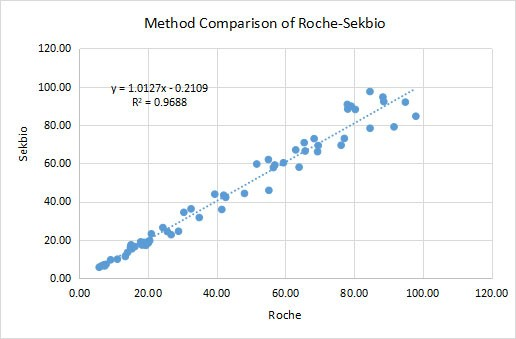Time Resolved Fluorescent Lateral Flow Testing for Vitamin D Detection
Time-Resolved Fluorescent Lateral Flow Testing for Vitamin D Detection
Vitamin D, often referred to as the "sunshine vitamin," is a crucial component for overall health and well-being. Its significance in the clinical realm cannot be overstated, impacting various physiological processes and contributing to our understanding of several health conditions.
Vitamin D serves various physiological functions, including:
1. Maintaining Normal Blood Calcium and Phosphate Concentrations
2. Enhancing Calcium Absorption in the Small Intestine
3. Supporting Mineralization of Bones and Other Connective Tissues in Conjunction with Vitamins, Hormones, and Minerals
4. Concentration of Vitamin D is Closely Regulated by PTH (Parathyroid Hormone), which Stimulates Reabsorption of Calcium Ions in the Renal Tubules and Promotes the Renal Synthesis of 1,25-(OH)2 Vitamin D
5. Crucial for the Formation and Maintenance of Strong Bones
6. Regulating Cell Growth and Differentiation
7. Regulating Immune Function

Source: from Mayo Clin Proc January 2011;86(1):50-60
Vitamin D plays a pivotal role in calcium absorption and bone health. It is essential for maintaining strong bones and teeth, making it particularly critical for growing children and older adults. Deficiencies in vitamin D can lead to conditions like osteoporosis, rickets, and bone fractures.

Time-Resolved Fluorescent Lateral Flow Testing, a sophisticated method for vitamin D detection, has brought new dimensions to our understanding of vitamin D's clinical implications. This technology allows for precise and sensitive measurement of vitamin D levels, aiding in diagnosing deficiencies early on and enabling targeted treatments to improve patients' health outcomes.
Time-Resolved Fluorescent Lateral Flow Testing combines the benefits of lateral flow assays with time-resolved fluorescent detection. Lateral flow assays are renowned for their simplicity and rapid results. By incorporating time-resolved fluorescence, this technique elevates the accuracy and sensitivity of vitamin D detection to a new level.
The key advantage of time-resolved fluorescent lateral flow testing is its exceptional sensitivity. This method can detect ultra-low concentrations of vitamin D, enabling early detection of deficiencies and facilitating proactive intervention. The time-resolved feature allows precise quantification, making it indispensable in both clinical and research settings.

In conclusion, the clinical significance of vitamin D is vast and multifaceted. From bone health to immune function and disease prevention, vitamin D plays a pivotal role. The integration of cutting-edge technologies like Time-Resolved Fluorescent Lateral Flow Testing is advancing our ability to accurately measure vitamin D levels, ultimately contributing to better patient care and a deeper understanding of its vital role in human health.
Related Immunoassays
- Cardiac Markers
-
Tumor Marker
-
PGII
-
G17
- CA50
-
CA125
- CA242
-
CA15-3
- CA19-9
- CA72-4
-
Pepsinogens I (PGI)
-
Human Epididymis 4 (HE4)
- Prostate-Specific Antigen (PSA)
- Squamous Cell Carcinoma (SCC)
- Neuron-Specific Enolase (NSE)
- Cytokeratin 19 Fragment (CYFRA21-1)
- Human Progastrin-releasing Peptide (ProGRP Tumor Marker)
- Protein Induced by Vitamin K Absence or Antagonist-II (PIVKA II Tumor Marker)
- Alpha-fetoprotein(AFP)
-
CEA
-
Human Chitinase 3-like 1
-
PGII
- Inflammatory Marker
- Infectious Disease
- Hormones
- Thyroid Function
- Glucose Metabolism
- Bone Marker
- Others
-
Heterophilic Blocking Reagent
- Animal Diagnostics

















